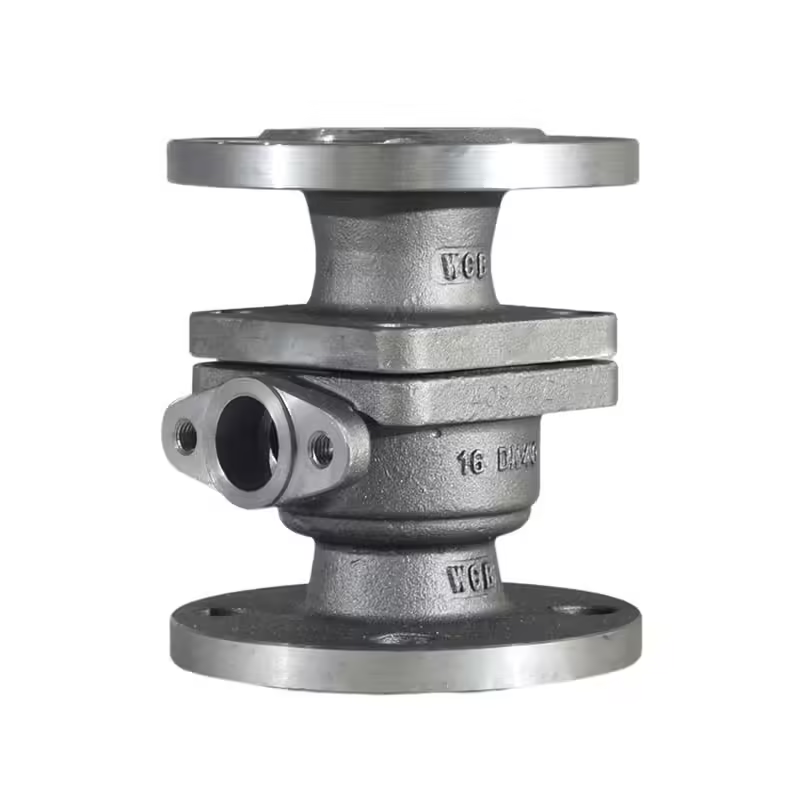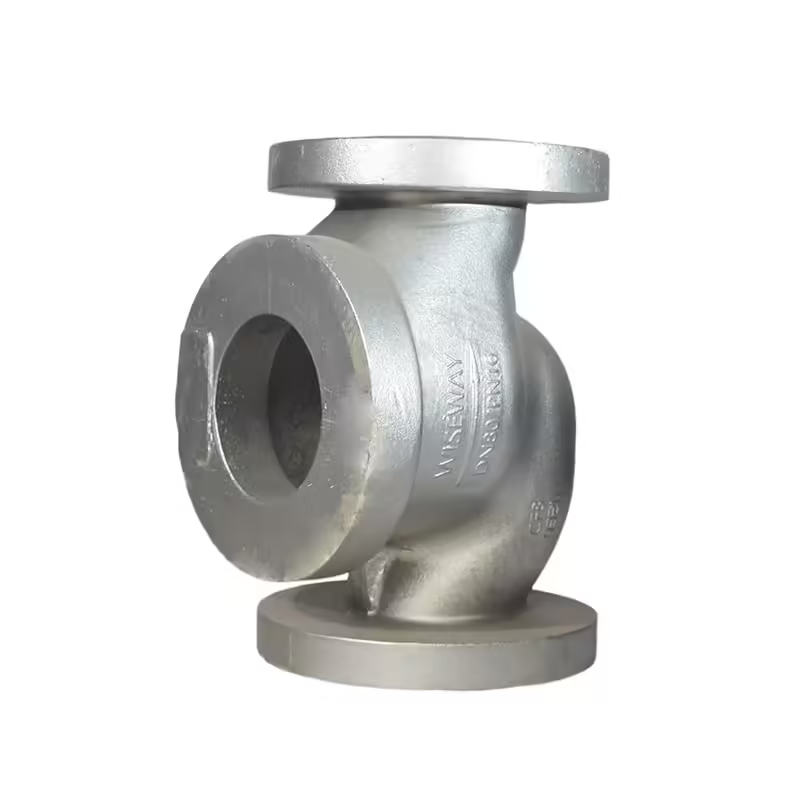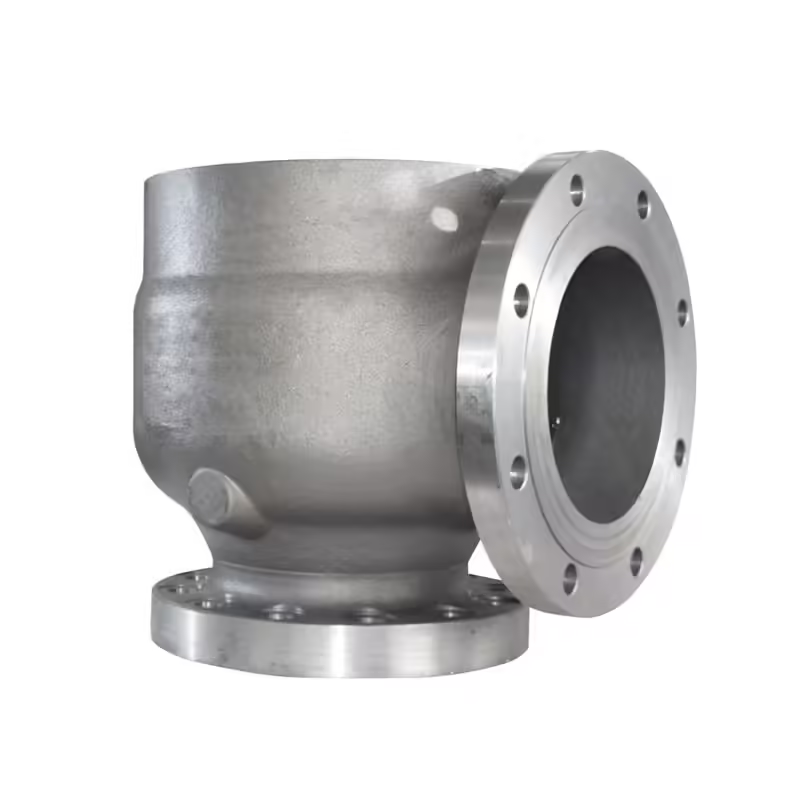الأخطاء الشائعة في مصبوبات جسم الصمام والتي يجب عليك تجنبها
مرحباً بكم في مدونتي!
يسعدني وجودك هنا! قبل أن نتعمق في المحتوى، أود أن تنضموا إليّ على منصات التواصل الاجتماعي. هناك أشارككم أفكارًا إضافية، وأتواصل مع مجتمعنا الرائع، وأُطلعكم على آخر الأخبار. إليكم كيفية البقاء على تواصل:
📘 فيسبوك: شركة شنغهاي لييروو الصناعية التجارية المحدودة
الآن، لننطلق في هذه الرحلة معًا! آمل أن تجدوا هذا المحتوى مفيدًا ومُلهمًا وقيّمًا. هيا بنا!
جدول المحتويات
مقدمة

مصبوبات جسم الصمام تُعد مكونات أساسية في العديد من التطبيقات الصناعية، من محركات السيارات إلى الأنظمة الهيدروليكية. فهي تُشكل أساسًا للتشغيل السلس للصمامات التي تُنظم تدفق السوائل أو الغازات. ومع ذلك، وكما هو الحال في أي عملية تصنيع، هناك مخاطر مرتبطة باختيار مصبوبات أجسام الصمامات رديئة الجودة. يمكن أن يكون لهذه المخاطر الخفية آثار طويلة المدى على أداء المعدات وسلامتها وتكاليف صيانتها. في هذه المقالة، سنستكشف المخاطر الخفية لسوء جودة... صب جسم الصمام، والمخاطر التي تشكلها، وكيفية تجنب هذه المشاكل عن طريق اختيار المورد المناسب.
أهمية الجودة في مصبوبات جسم الصمام
عندما يتعلق الأمر بالمكونات الصناعية، مثل أجسام الصمامات، فإن ضمان أعلى مستويات الجودة أمرٌ لا غنى عنه. قد يؤدي الصب المعيب إلى عواقب وخيمة، كالتسريبات، وانخفاض كفاءة النظام، والتآكل المبكر. يُعد فهم الخصائص الرئيسية للصب عالي الجودة أمرًا بالغ الأهمية لأي عملية تعتمد على هذه المكونات. تُعدّ الدقة سمةً مميزةً لأجسام الصمامات عالية الجودة، حيث تشمل التركيبة الصحيحة للمواد، وسطحًا أملسًا، وسماكة جدار ثابتة. هذه العوامل أساسية لضمان قدرة المكون على تحمل الضغوط البيئية والتشغيلية التي سيواجهها أثناء الخدمة.
في المقابل، غالبًا ما تنطوي المكونات منخفضة الجودة المصنوعة من مصبوبات رديئة الصنع على مخاطر جوهرية. تشمل هذه المخاطر عيوبًا في المواد، أو تشققات، أو تفاوتًا في السُمك، والتي قد تُؤثر سلبًا على أداء النظام بأكمله. حتى العيوب البسيطة، مثل الشقوق الصغيرة أو عدم انتظام السطح، قد تُؤدي إلى إصلاحات مكلفة وتوقف غير متوقع. لذلك، يُعد فهم المخاطر الشائعة المرتبطة بتصنيع هياكل الصمامات دون المستوى المطلوب - وكيفية تجنبها - خطوة أساسية في حماية سلامة المعدات الصناعية وطول عمرها.
الأخطاء الشائعة في عمليات الصب الرديئة في أجسام الصمامات

التناقضات المادية
من أهم عيوب استخدام أجسام الصمامات رديئة التصنيع عدم تناسق المواد. فإذا لم تُضبط سبيكة المادة بدقة، أو إذا أُدخلت شوائب في عملية الصب، فقد يُصاب المنتج النهائي بضرر هيكلي. على سبيل المثال، قد تصبح أجسام الصمامات ذات المحتوى الكربوني الزائد هشة وعرضة للتشقق تحت الضغط. كما أن اختلاف جودة المواد قد يؤثر على متانة الصمام وأدائه بشكل عام، مما يزيد من خطر الأعطال غير المتوقعة.
المعالجة الحرارية غير السليمة
تلعب المعالجة الحرارية دورًا محوريًا في ضمان متانة المنتج النهائي ومتانته. فعندما تتعرض المسبوكات لدرجات حرارة غير صحيحة أو تسخين غير متساوٍ، قد ينتج عن ذلك مناطق ذات صلابة غير متساوية، مما يؤدي إلى نقاط ضعف داخل المكون. وقد تؤدي هذه النقاط الضعيفة في النهاية إلى تعطله في ظروف التشغيل العادية. تضمن المعالجة الحرارية المناسبة وصول جسم الصمام إلى الخصائص الميكانيكية المطلوبة، مما يسمح له بالعمل بكفاءة في ظل الظروف القاسية.
عدم دقة الأبعاد
دقة الأبعاد عاملٌ أساسيٌّ آخر يُميّز أجسام الصمامات عالية الجودة. فالمسبوكات التي تعاني من مشاكل مثل الانكماش المفرط أو الالتواء أو التشوه قد تُؤدي إلى تركيب غير صحيح، مما يُسبب مشاكل في الإحكام وحدوث تسريبات محتملة. حتى أصغر أخطاء الأبعاد قد تؤثر على أداء النظام، مما يُؤدي إلى تدفق غير فعال وزيادة احتمالية حدوث أعطال. لذا، يُعدّ ضمان مطابقة أجسام الصمامات للأبعاد الدقيقة أمرًا بالغ الأهمية لتحقيق إحكام مثالي وأداء مثالي في الأنظمة المعقدة.
عيوب السطح
جودة السطح مهمة بنفس القدر. عيوب مثل المسامية، والشقوق، وخشونة التشطيبات قد تؤثر سلبًا على أداء أجسام الصمامات. المسامية هي فجوات أو ثقوب صغيرة تتشكل داخل الصب، مما يُسبب نقاط ضعف قد تؤدي في النهاية إلى تسريبات. الشقوق على السطح تُضعف سلامة الصمام، مما يؤدي إلى انخفاض عمره الافتراضي وضعف أدائه التشغيلي. كما أن خشونته قد تعيق قدرة الصمام على الإغلاق بشكل صحيح، مما يؤدي إلى انخفاض كفاءة السوائل وتعطله في النهاية.
عدم وجود مراقبة صارمة للجودة
من أخطر المشاكل المرتبطة بأجسام الصمامات رديئة الجودة غياب الرقابة الفعالة على الجودة أثناء الإنتاج. فعندما لا تُراقب عمليات التصنيع أو تُفحص بدقة، قد لا تُكتشف العيوب التي تؤثر على السلامة الميكانيكية والهيكلية للصمام. وقد تُسبب هذه العيوب مشاكل تشغيلية وتزيد من خطر الأعطال في ظروف العمل العادية. وعادةً ما تستخدم الشركات المصنعة الرائدة أساليب اختبار شاملة، مثل فحوصات الأشعة السينية والموجات فوق الصوتية، إلى جانب الفحوصات البصرية، لضمان التزام كل مكون بأعلى معايير الصناعة.
الجدول: القضايا الشائعة في مصبوبات جسم الصمام وتأثيراتها
| مشكلة | التأثير على الأداء | العواقب المحتملة |
|---|---|---|
| التناقضات المادية | ضعف البنية والفشل المبكر | التشقق والتآكل وانخفاض العمر الافتراضي |
| المعالجة الحرارية غير السليمة | صلابة غير متساوية، نقاط ضعف | فشل الصمام، ضعف الهيكل |
| عدم دقة الأبعاد | سوء الملاءمة، التسرب، عدم الكفاءة | عطل في النظام، تسرب |
| عيوب السطح | انخفاض قدرات الختم | التسريبات، التحكم غير الفعال في السوائل |
| عدم وجود مراقبة الجودة | عيوب غير مكتشفة وأداء غير موثوق به | زيادة الصيانة وتوقف النظام |
كيفية تجنب الوقوع في فخ الفقر مصبوبات جسم الصمام

لتجنب المخاطر المرتبطة بأجسام الصمامات رديئة الجودة، من الضروري اختيار مُصنِّع يلتزم بممارسات صارمة لمراقبة الجودة. إليك بعض الخطوات لمساعدتك في اختيار المورِّد المناسب:
التحقق من الشهادات والمعايير
اختر الشركات المصنعة المعتمدة بمعايير الجودة الدولية مثل ISO 9001. تضمن الشهادة أن الشركة المصنعة تلتزم بنظام إدارة الجودة الموثوق بها وتنتج باستمرار مصبوبات عالية المستوى.
طلب شهادات المواد والاختبار
سيُقدّم المُصنّع ذو السمعة الطيبة وثائق تُثبت تركيب المواد وخصائصها الميكانيكية. تضمن شهادات المواد استيفاء جسم الصمام للمواصفات المطلوبة وخلوه من العيوب.
اطلب عمليات التفتيش والاختبار المنتظمة
تأكد من قيام الشركة المصنعة بإجراء عمليات تفتيش شاملة طوال عملية الإنتاج. يشمل ذلك فحص الأبعاد، وتقييم جودة السطح، والاختبارات المتقدمة مثل فحوصات الموجات فوق الصوتية أو الأشعة السينية للكشف عن العيوب الخفية التي قد تؤثر على الأداء.
فكر في الحلول المخصصة للمتطلبات الفريدة
للتطبيقات عالية التخصص، يُقدّم بعض المُورّدين أجسام صمامات مُخصّصة تُلبّي احتياجات مُحدّدة. يُساعد التخصيص على ضمان ملاءمة المنتج للاستخدام المُخصّص له وتلبيته لمتطلبات التشغيل الفريدة، مما يُعزّز الثقة في أدائه ومتانته.
خاتمة
يمكن أن تؤثر المخاطر الخفية لسوء جودة مصبوبات أجسام الصمامات بشكل كبير على أداء معداتك ومتانتها وموثوقيتها. بوعيك بهذه المخاطر واختيارك موردًا موثوقًا، يمكنك ضمان جودة مصبوبات أجسام الصمامات لديك وتلبيتها لمتطلبات تطبيقك. تذكر أن مراقبة الجودة، وتناسق المواد، والاختبارات الشاملة هي عوامل أساسية لتجنب الإصلاحات المكلفة، وتوقف العمل، وأعطال النظام.
الأسئلة الشائعة
ما هي أفضل مادة ل صب جسم الصمام?
تعتمد أفضل المواد على التطبيق، ولكن المواد المستخدمة بشكل شائع تشمل الحديد الزهر والصلب والفولاذ المقاوم للصدأ، وكلها توفر مزايا مختلفة اعتمادًا على بيئة التشغيل ومتطلبات الضغط.
كيف يمكنني التأكد من صب جسم الصمام تلبية معايير الجودة؟
ابحث عن الموردين الحاصلين على شهادات ISO، وتأكد من أنهم يستخدمون ممارسات مراقبة الجودة الحديثة، واطلب شهادات المواد للتحقق من المواصفات.
لماذا توجد عيوب سطحية في صب جسم الصمام مشكلة كبيرة؟
يمكن أن تؤدي العيوب السطحية، مثل الشقوق أو المسامية، إلى حدوث تسربات، مما يقلل من كفاءة التحكم في السوائل ويعرض سلامة النظام للخطر.
هل يمكنني الحصول على تخصيص؟ صب جسم الصمام?
نعم، تقدم العديد من الشركات المصنعة صب جسم الصمام المخصص لتلبية احتياجات التصميم أو المواد أو الأداء المحددة.
ما هي التطبيقات الشائعة لـ صب جسم الصمام?
تُستخدم مصبوبات جسم الصمام على نطاق واسع في الصناعات مثل النفط والغاز والسيارات وتوليد الطاقة ومعالجة المياه للتحكم في تدفق السوائل والغازات.
فئات المنتجات
- أجزاء الصمامات
- أجزاء مضخة المياه
- أجزاء صندوق المحمل
- أجزاء الصب بالقالب
- منتجات مضخات الفولاذ المقاوم للصدأ
- منتجات مضخات الحديد الزهر
- قطع غيار الصمامات لاستخدام السيارات
- قطع غيار السيارات
- أجزاء الصمامات للاستخدام المدني
- قطع غيار مضخة التفريغ KF

